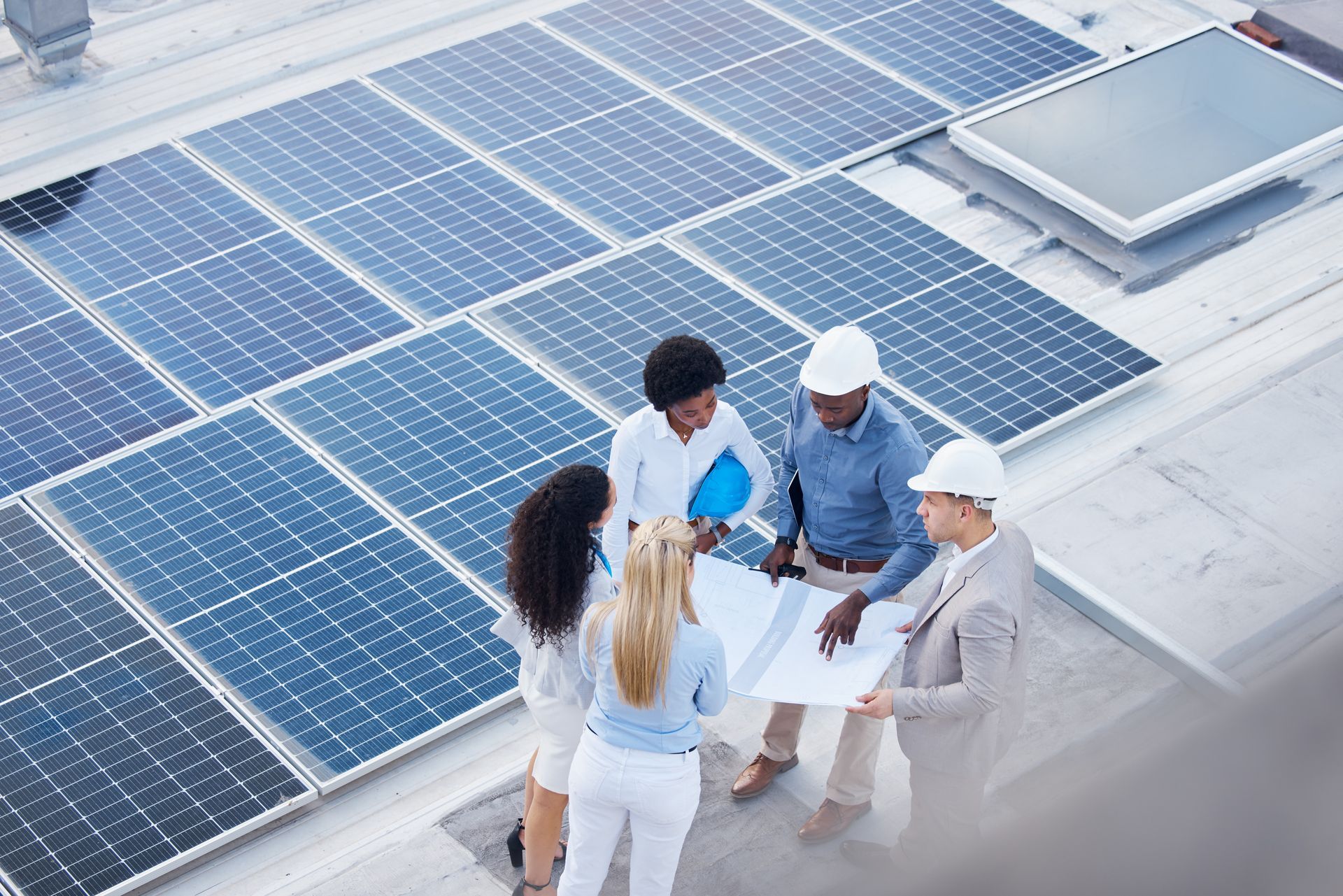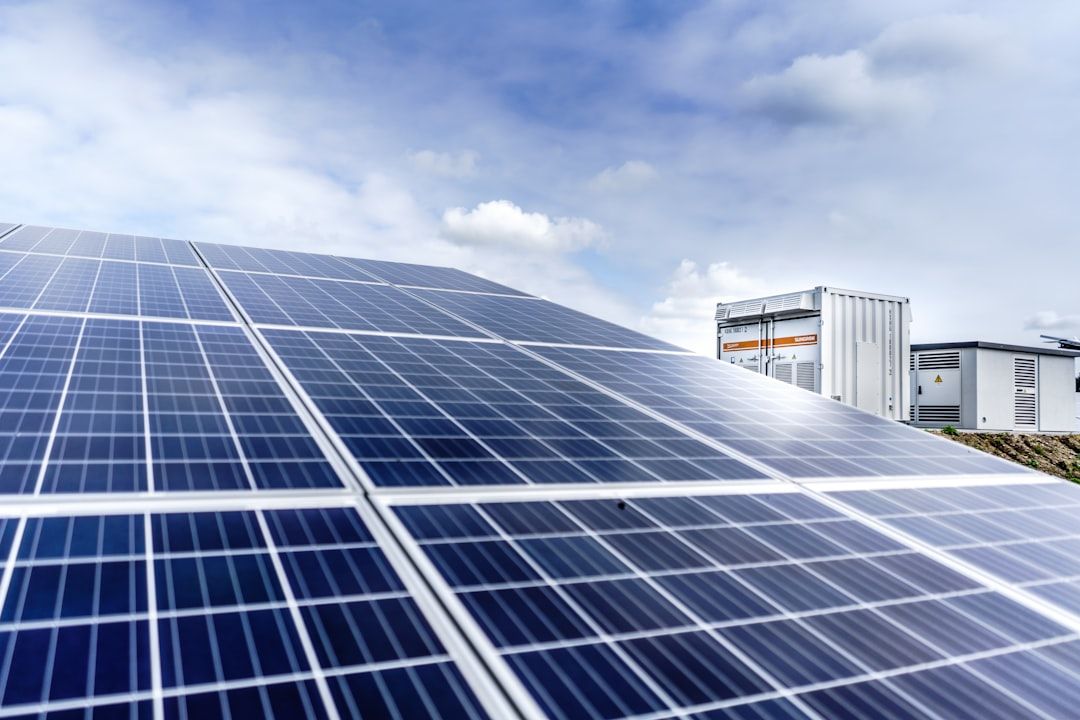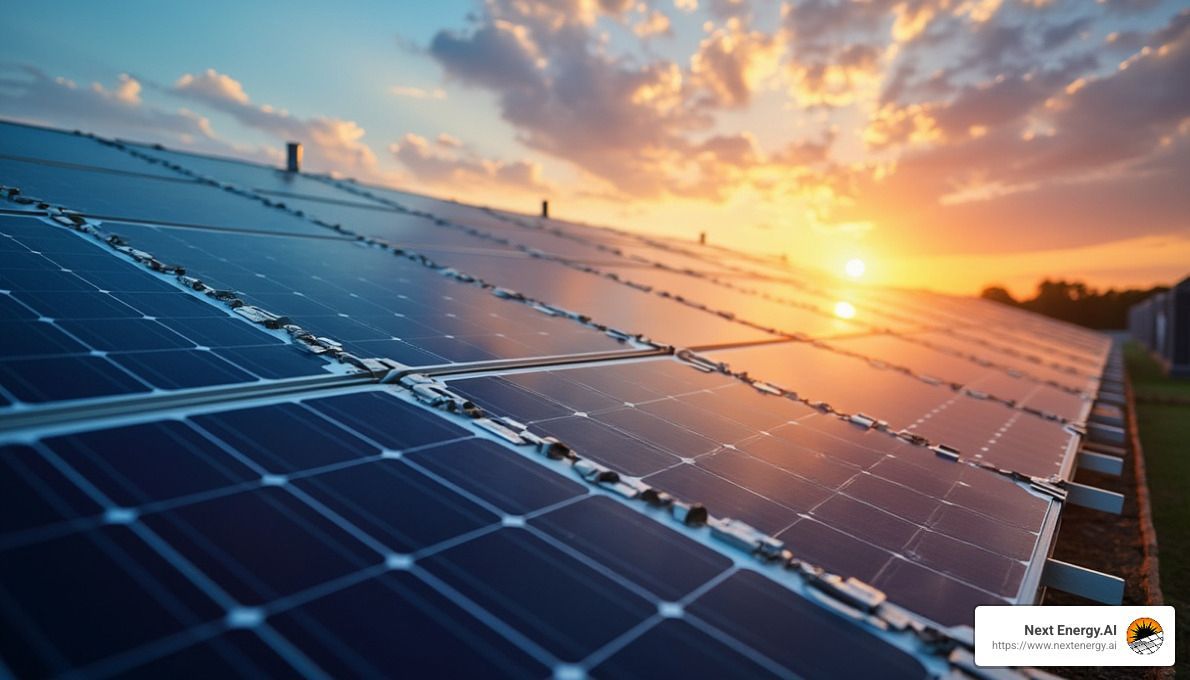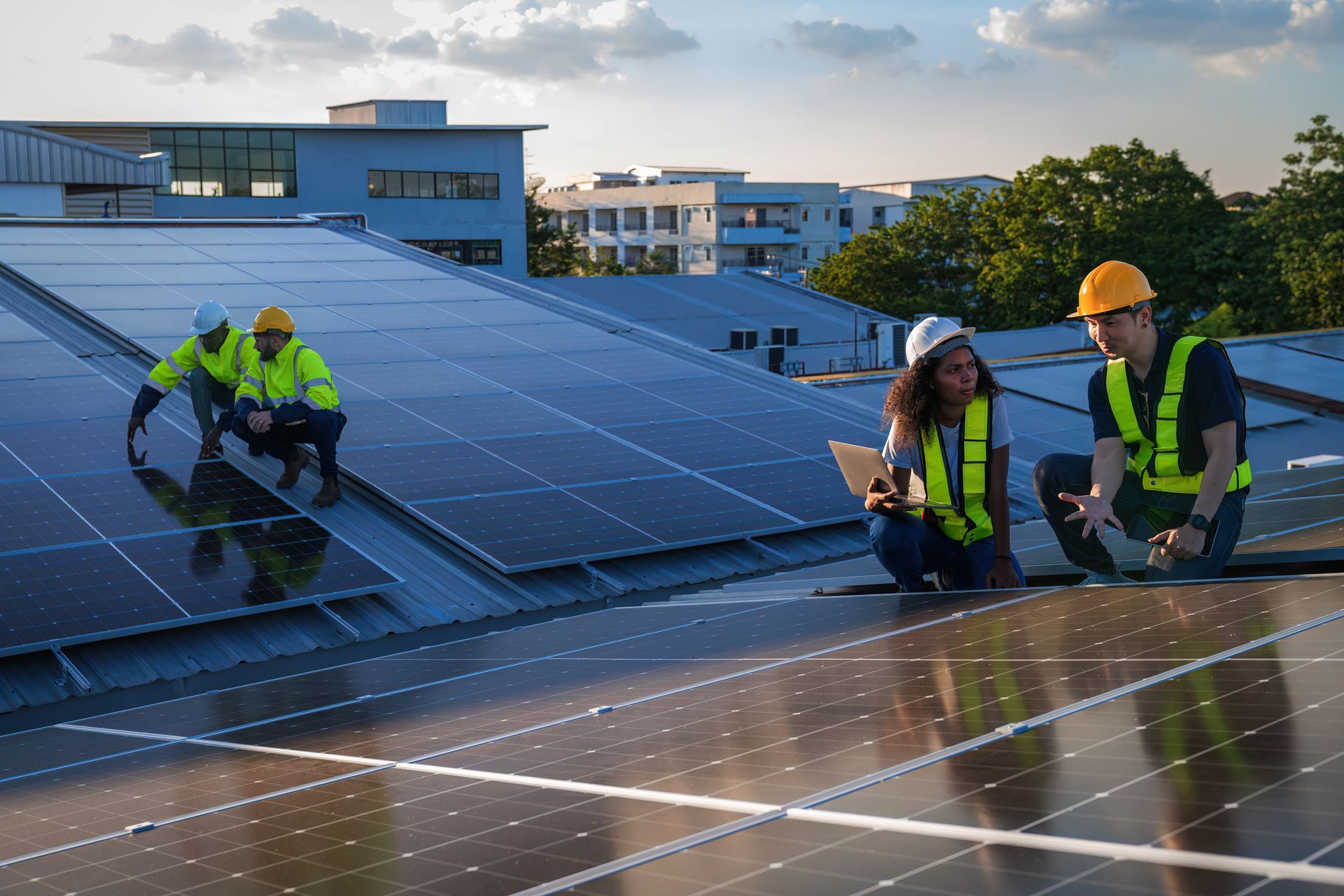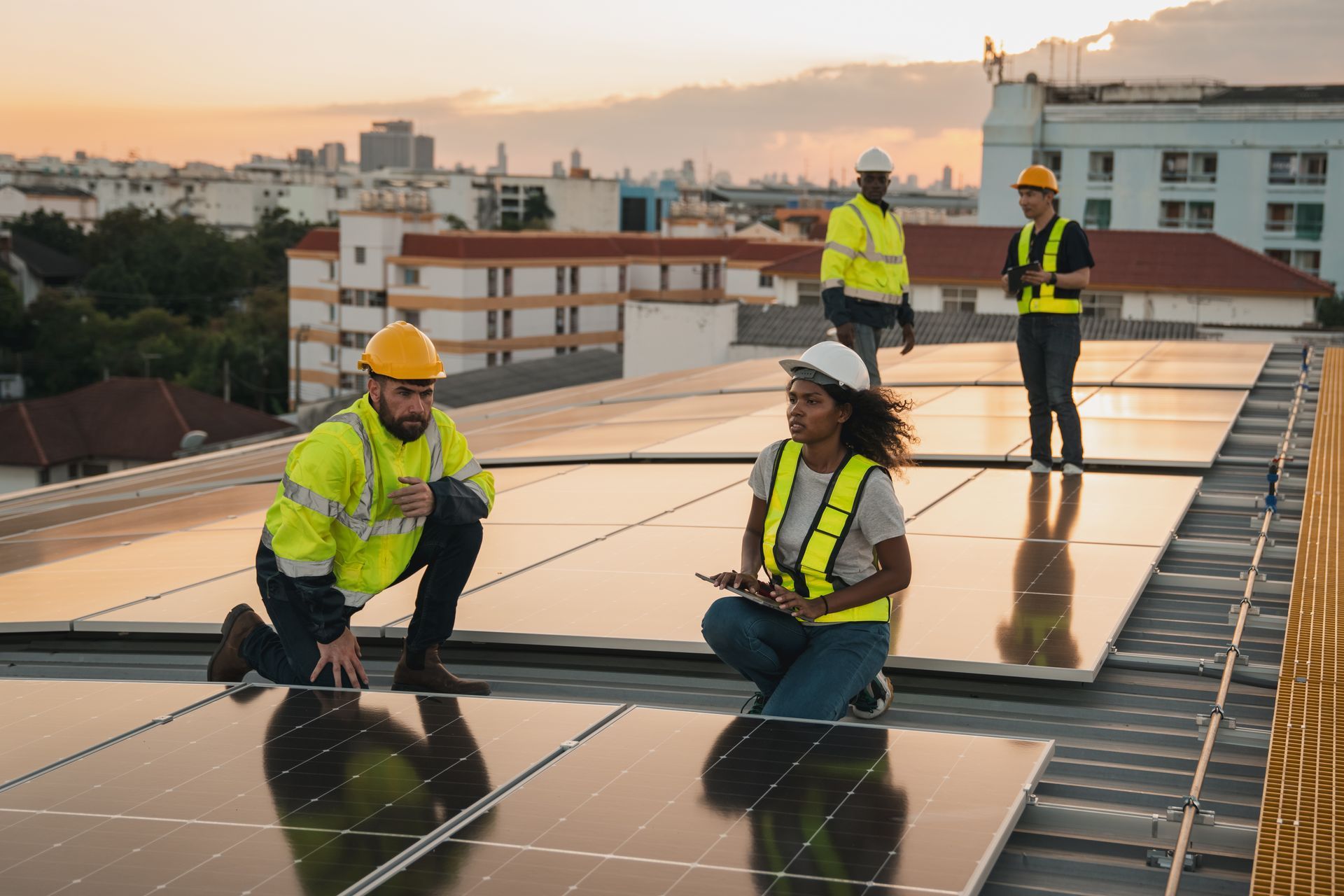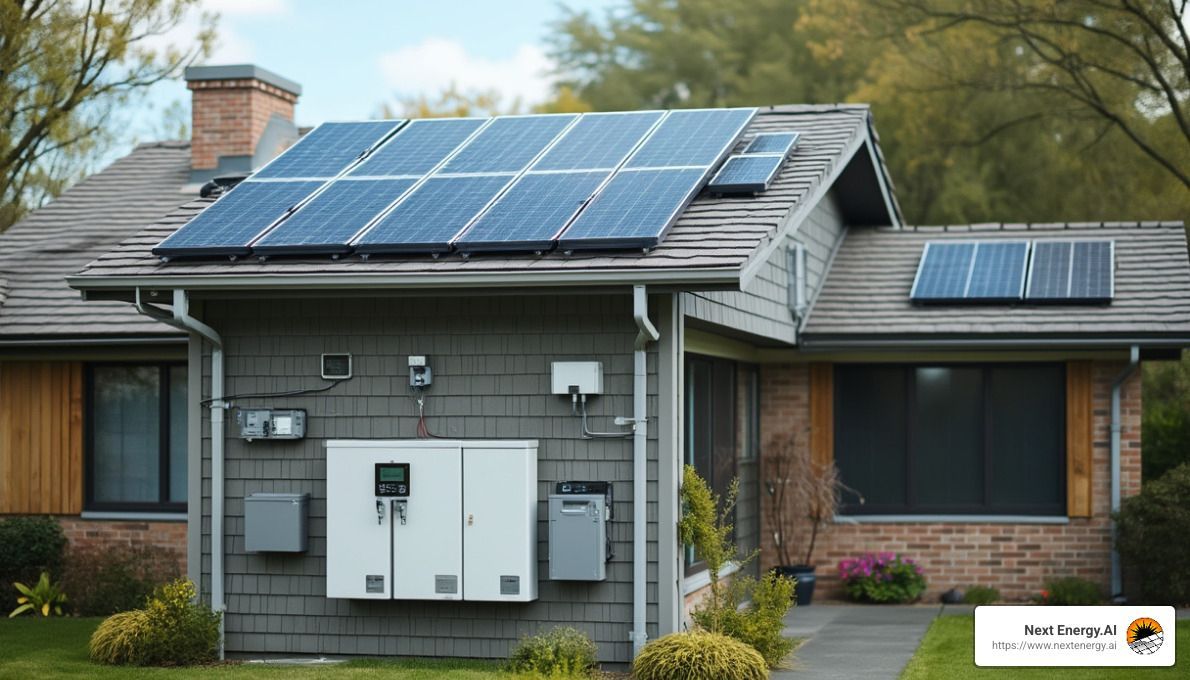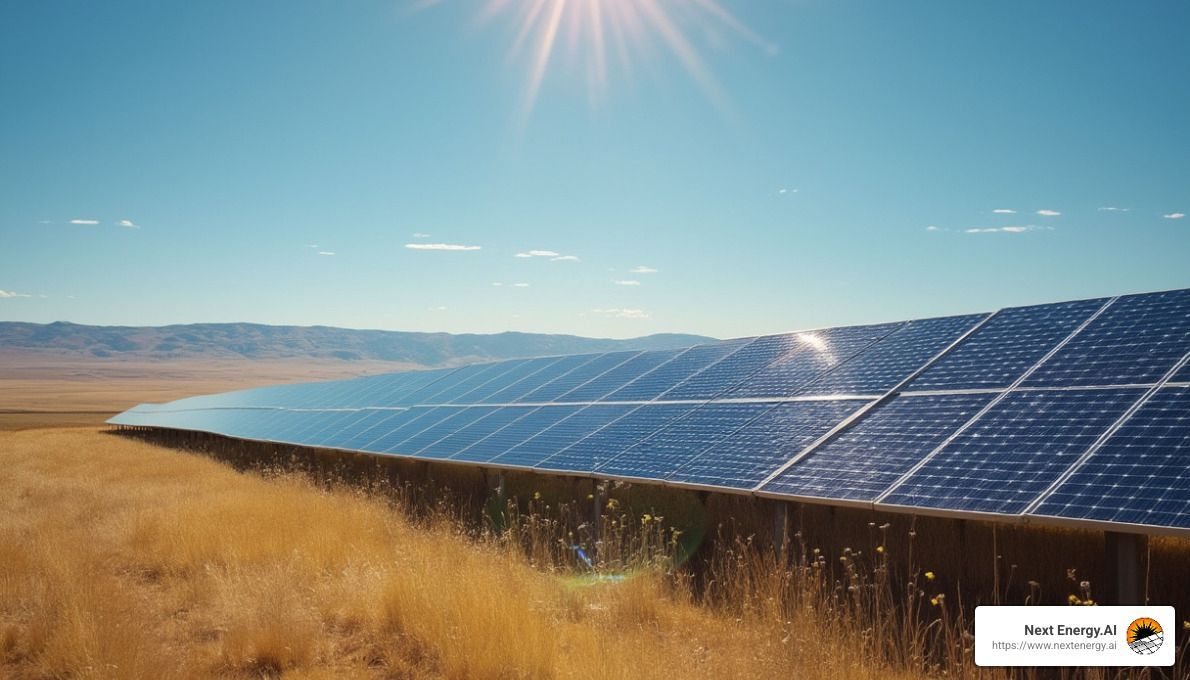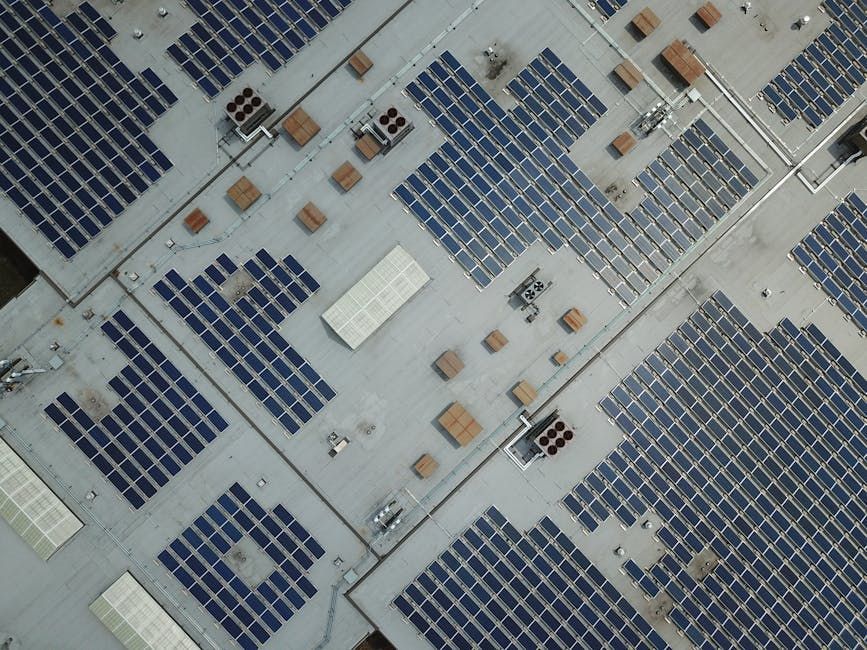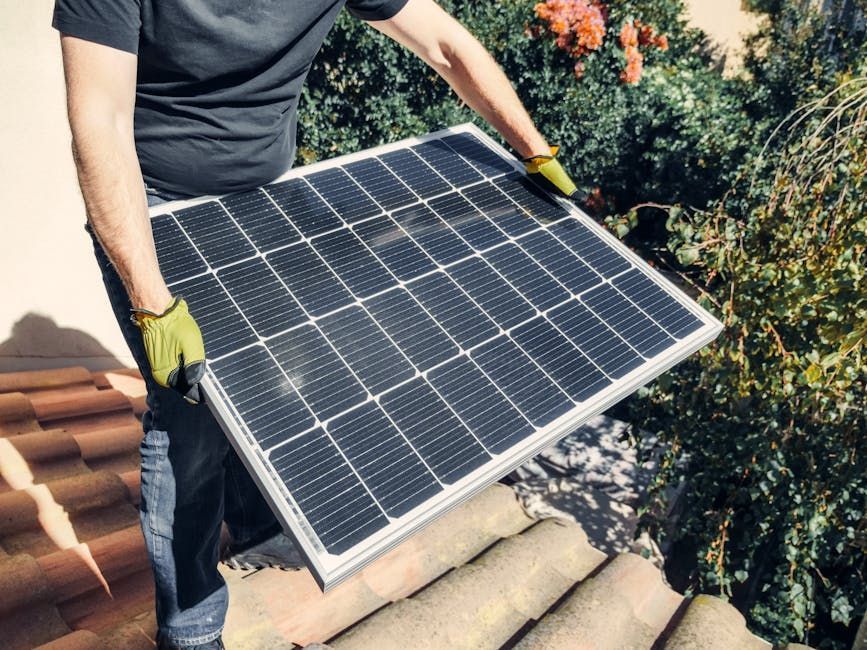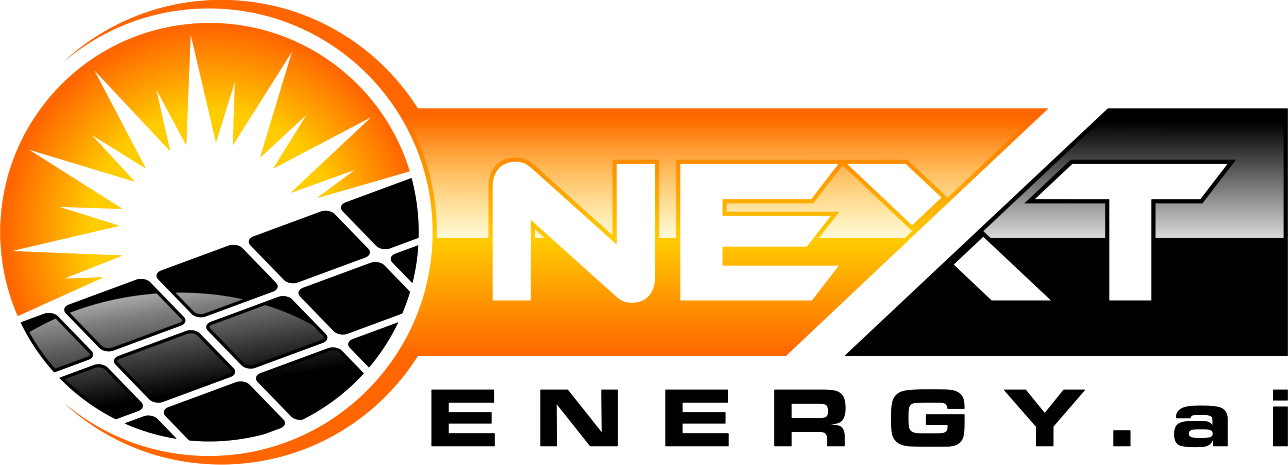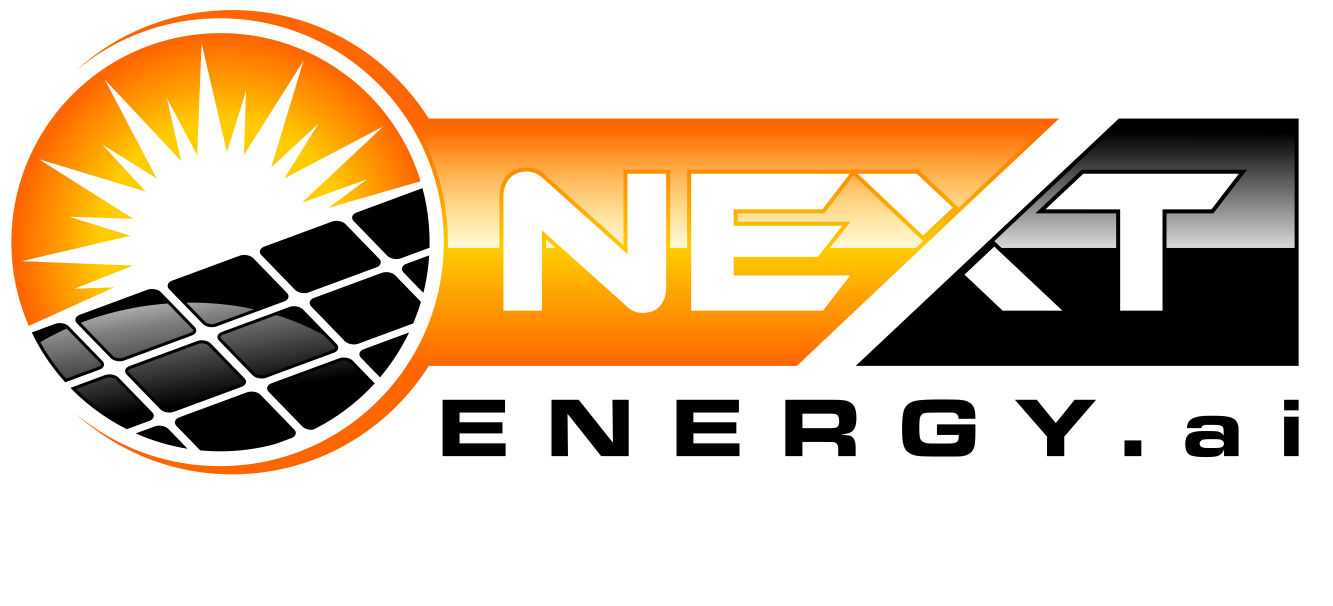The Price of Sunshine: How Much to Install Solar Panels
The Surprisingly Simple Truth About Solar Panel Installation Costs
If you're wondering how much does it cost to install solar panels, let’s get right to the point. On average, the installation cost can range significantly based on several factors, including your location, the type of panels chosen, and the system size you need. Here's a quick breakdown to help set expectations:
- Average Cost Nationwide: $20,000 to $40,000 total
- Cost per Watt: Approximately $2.50 to $3.50
- Estimated Payback Period: 6 to 12 years, depending on your area and usage
- Long-term Savings: Potentially from $40,000 to over $100,000 in 25 years
Transitioning to solar energy offers incredible savings on electricity bills and contributes to environmental health. As the cost of solar panels has fallen, more homeowners are seeing the value in investing in this renewable energy source.
I'm Spencer Gordon. As the CEO of Next Energy.AI, I've spent years in the renewable energy industry, keenly observing how the question how much does it cost to install solar panels can spark meaningful conversations about both economic savings and sustainability. With extensive experience from technical fields to the solar industry's forefront, I aim to guide you through understanding the true cost and benefit dynamics of solar installations.
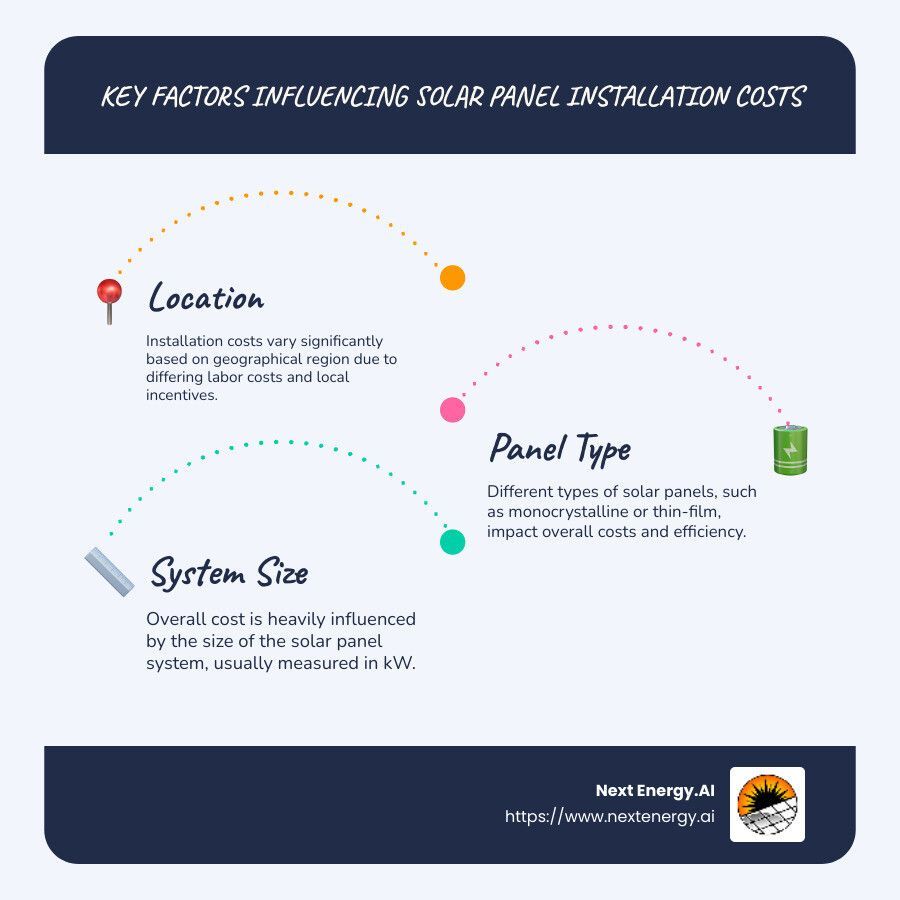
Understanding Solar Panel Costs in 2025
In 2025, solar panel costs are expected to be more affordable than ever. Thanks to advancements in technology and generous federal incentives, installing solar panels is becoming a smart financial move for many homeowners.
Price Drop
Over the past decade, the cost of solar panels has decreased significantly. In 2025, the average cost to install solar panels is expected to be around $20,552 for an 11 kW system after applying federal tax credits. This is a substantial drop compared to previous years. The price per watt has also decreased, with an average of about $2.56 per watt before incentives.
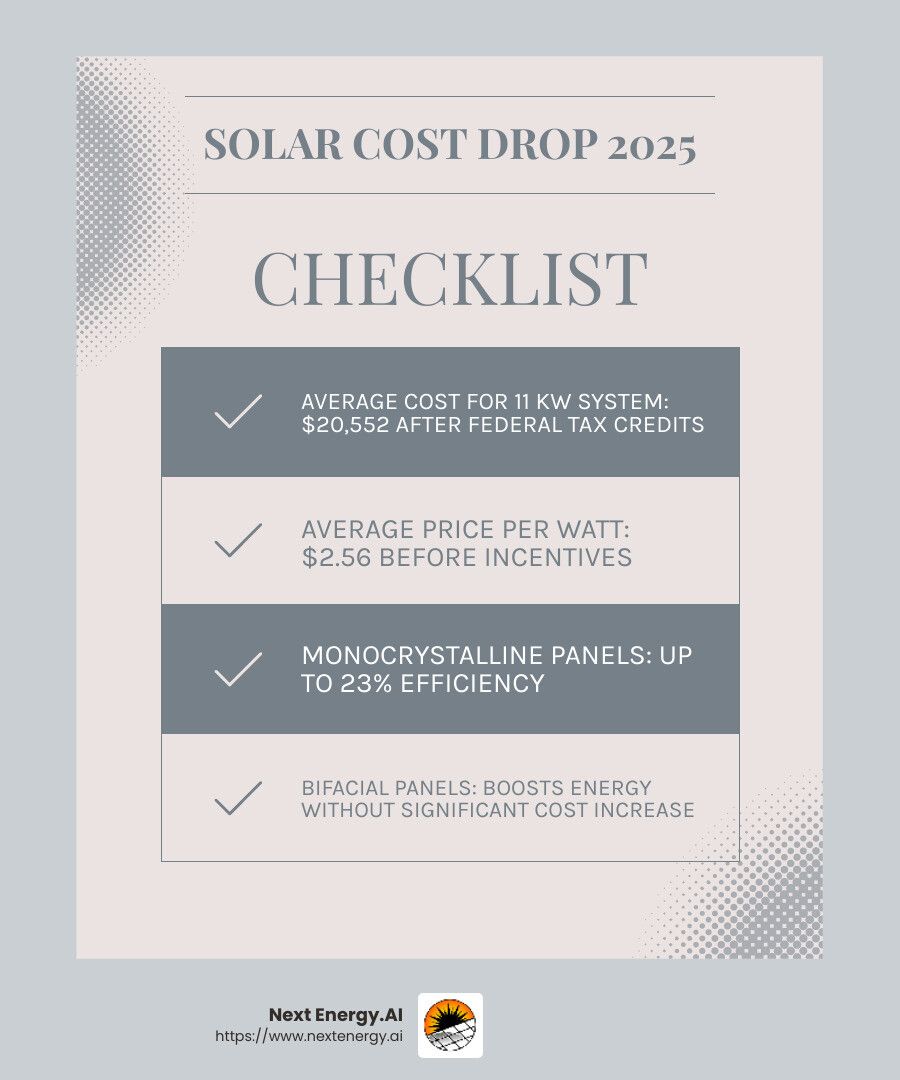
Technology Advancements
Technological improvements play a huge role in reducing costs. Solar panels are now more efficient and durable, meaning they can generate more electricity from the same amount of sunlight. Monocrystalline panels are leading the way with efficiency rates reaching up to 23%. These panels might cost a bit more upfront, but their efficiency can lead to more savings in the long run.
Moreover, innovations like bifacial panels, which capture sunlight on both sides, are boosting energy production without a significant increase in cost. This means more energy and savings for homeowners.
Federal Incentives
Federal incentives make solar panel installation even more appealing. The federal tax credit, also known as the Investment Tax Credit (ITC), offers a 30% deduction on the cost of installing solar panels. This credit significantly reduces the upfront cost and shortens the payback period, making solar investment more viable.
In 2025, the ITC remains a powerful incentive, encouraging more homeowners to switch to solar energy. Combined with state-specific rebates and incentives, the financial benefits can be substantial, driving more people to consider solar as a cost-effective energy solution.
With these factors in mind, it's clear that 2025 is shaping up to be a great year for those looking to invest in solar energy. As costs continue to drop and technology advances, solar panels are becoming a more accessible and attractive option for homeowners.
Now, let's dig into the specifics of solar panel costs by system size to give you a clearer picture of what to expect.
How Much Does It Cost to Install Solar Panels?
When considering how much it costs to install solar panels, several factors come into play. From the size of the system to the type of panels, these variables can significantly influence the final price tag.
Cost Breakdown by System Size
The cost of installing solar panels varies with the size of the system. Here's a quick look at average costs for different system sizes in 2025:
System Size
5 kW
$18,000
$12,600
10 kW
$27,300
$19,110
15 kW
$38,000
$26,600
Note: These figures are estimates and can vary based on location and specific circumstances.
Larger systems generally have a lower cost per watt. This is similar to buying in bulk: the overall price is higher, but the cost per unit is lower.
Cost Factors
Location
Your geographical location affects installation costs. States with more sunlight require fewer panels to generate the same amount of electricity. Additionally, some states offer better incentives and rebates, which can further reduce costs.
Equipment Type
The type of solar panels you choose also impacts the cost. Monocrystalline panels are known for their high efficiency and durability but come with a higher price tag. On the other hand, thin-film panels are more affordable but less efficient.
The complexity of the installation can influence the price. If your roof is complex or shaded, it might require additional equipment or labor, increasing costs. Alternatively, ground-mounted systems can be an option if roof space is limited.
Energy Consumption
Your household's energy consumption determines the number of panels needed. A home with high energy usage will require a larger system, which costs more. However, a larger system can offset more of your electricity bill, leading to greater savings over time.
Understanding these factors can help you estimate the cost of installing solar panels for your home. We'll explore different types of solar panels and their associated costs.
Types of Solar Panels and Their Costs
When considering how much does it cost to install solar panels, it's important to know the types of panels available. Each type offers unique benefits and costs.
Monocrystalline Panels
Monocrystalline panels are the top choice if you're looking for efficiency and durability. Made from single-crystal silicon, they allow electrons to move more freely, which boosts energy efficiency. These panels typically have a sleek black appearance and are known for their long lifespan.
- Efficiency: Monocrystalline panels are the most efficient, often reaching 20-23% efficiency rates. This means they can produce more electricity from the same amount of sunlight compared to other types.
- Durability: They are also the most durable, with many manufacturers offering warranties of 25 years or more. Their robust nature makes them ideal for areas with extreme weather conditions.
However, this efficiency and durability come at a higher cost. For those who prioritize long-term savings and have the budget, monocrystalline panels are worth the investment.
Bifacial Panels
Bifacial panels are a newer technology designed to capture sunlight on both sides. This dual-sided feature allows them to harness additional light reflected from the ground or surrounding surfaces, increasing energy production.
- Energy Production: By capturing sunlight on both the front and back, these panels can increase energy output by up to 20% compared to traditional panels. This makes them an excellent choice for areas with reflective surfaces like snow or sand.
While bifacial panels are slightly more expensive than standard panels, their ability to generate more electricity can offset this cost over time. They're particularly beneficial in installations where maximizing energy output is a priority.
Thin-Film Panels
Thin-film panels offer a different set of advantages. They are made from materials like cadmium telluride and amorphous silicon, which make them lightweight and flexible. This flexibility is ideal for unique installations where traditional panels might not fit.
- Flexibility: Thin-film panels can be applied to a variety of surfaces, including curved or uneven areas. This makes them suitable for unconventional installations, such as on vehicles or portable applications.
- Lifespan: While thin-film panels are less efficient, with efficiency rates typically between 10-12%, they are often more affordable. However, they generally have a shorter lifespan than crystalline panels.
Thin-film panels are a cost-effective option for those with space constraints or specific installation needs. They offer versatility but may require more space to achieve the same energy output as monocrystalline or bifacial panels.
Understanding these types of solar panels and their costs can help you make an informed decision based on your specific needs and budget. Next, we'll dig into the financial incentives and savings that can further reduce the cost of solar panel installation.
Financial Incentives and Savings
When you're thinking about how much does it cost to install solar panels, it's crucial to consider the financial incentives that can help reduce the overall cost. These incentives not only make solar more affordable but also improve your return on investment (ROI).
Federal and State Incentives
One of the most significant incentives is the federal solar investment tax credit (ITC). This credit allows you to deduct 30% of the cost of installing a solar energy system from your federal taxes. It’s a big deal because it directly reduces the amount of taxes you owe.
State incentives can also play a crucial role. Many states offer local rebates and tax credits that further cut costs. For instance, some states provide sales tax exemptions on solar panel purchases or property tax exemptions for the added value of solar installations. You can explore specific incentives available in your state by checking resources like the Database of State Incentives for Renewables & Efficiency (DSIRE).
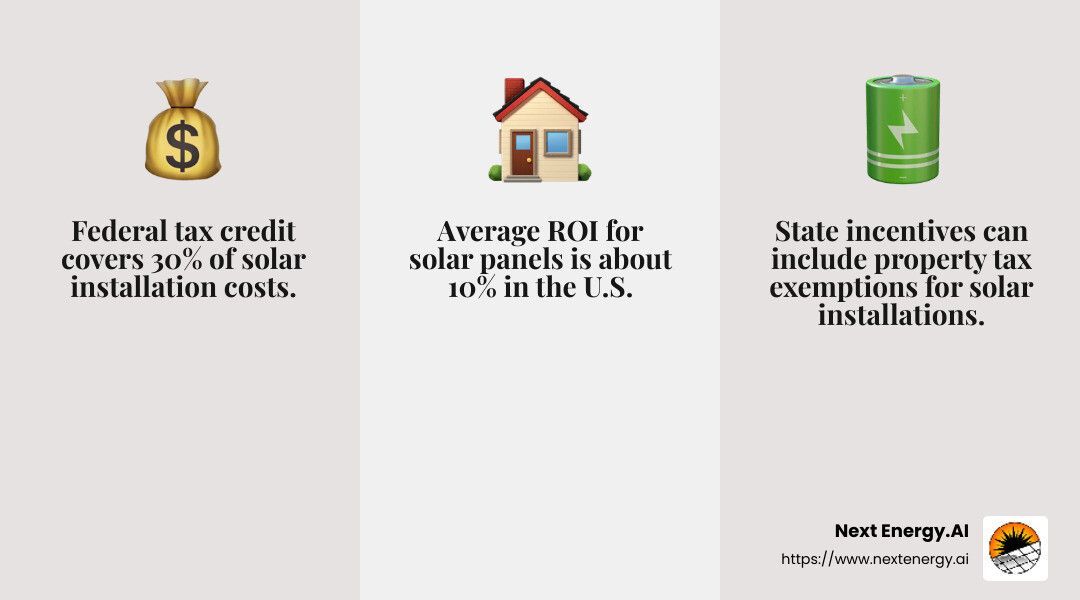
Return on Investment
Solar panels are more than just an eco-friendly choice; they're a smart financial investment. The average ROI for solar panels in the U.S. is about 10%. This means for every $100 you spend, you can expect to make a profit of $10 over time. However, ROI can vary based on location, system size, and available incentives.
Energy Savings: One of the primary ways solar panels provide a return is through energy savings. By generating your own electricity, you can significantly reduce or even eliminate your monthly utility bills. States with high electricity rates, like California, see even more significant savings.
Property Value Increase: Installing solar panels can also boost your property's value. Homes with solar systems are often valued higher, making them more attractive to buyers. This increase in property value adds another layer of financial benefit, especially if you plan to sell your home in the future.
In summary, while the initial cost of solar panels can be substantial, federal and state incentives, along with long-term energy savings and increased property value, make them a worthwhile investment. Next, we'll address some frequently asked questions about solar panel costs to provide even more clarity.
Frequently Asked Questions about Solar Panel Costs
How much do solar panels cost for a 2,000 square foot house?
The cost of solar panels isn't directly tied to the size of your house. Instead, it depends on your energy consumption. That said, for an average household with typical energy needs, you might expect to pay between $18,000 and $38,000 for a solar system before incentives.
The system size you need is usually between 5 kW and 15 kW. For a more precise estimate, it's best to consult a solar expert who can evaluate your specific energy usage and roof characteristics.
Do you really save money installing solar panels?
Yes, solar panels can lead to significant savings over time. Homeowners often see a reduction of 75% or more in their energy bills. On average, those with a complete solar system save between $41,000 and $62,000 in avoided utility costs over 25 years.
That savings are even larger in states with high electricity rates, like California and Hawaii. However, the key is ensuring your solar panels are well-installed and suited to your energy needs.
How many solar panels are needed for an average household?
The number of solar panels you need depends on your energy consumption and the efficiency of the panels you choose. On average, a typical U.S. household might need between 20 and 30 panels to cover their energy usage.
Factors like panel type, local sunlight hours, and roof size can affect this number. A solar installer can provide a custom assessment to determine the exact number of panels needed for your home.
Next, let's explore the different types of solar panels and their costs, which can further influence your decision-making process.
Conclusion
Investing in solar panels is not just about reducing your electricity bills; it’s about embracing a future of intelligent energy management. At Next Energy.AI, we understand that the decision to switch to solar is a significant one. That's why we offer AI-improved solar solutions that transform your panels into smart energy systems.
Why Choose Next Energy.AI?
Our systems are designed to optimize energy usage, ensuring you get the most out of your solar panels. With our cutting-edge technology, your panels do more than generate electricity—they become a hub for managing your home’s energy needs efficiently. This means you not only save money but also gain control over your energy consumption.
Solar as a Smart Investment
Solar panels are a long-term investment that pays back over time. With federal tax credits and state incentives, the initial cost is reduced significantly. Plus, as energy prices continue to rise, the savings from solar become even more valuable. Many homeowners see a return on investment within just a few years, with savings continuing for decades.
Join the Solar Revolution
By choosing Next Energy.AI, you’re not just installing solar panels; you’re joining a movement towards sustainable energy. Our commitment to quality and innovation ensures that you receive the best service and technology available. Whether you're in Loveland, Colorado, or anywhere else in Northern Colorado and Southern Wyoming, we're here to help you make an informed and impactful choice.
Ready to harness the power of the sun with intelligent energy management? Explore our solar installation services in Colorado and take the first step towards a brighter, greener future.
Energy Independence: Embrace the sun's energy and take a step towards energy independence!
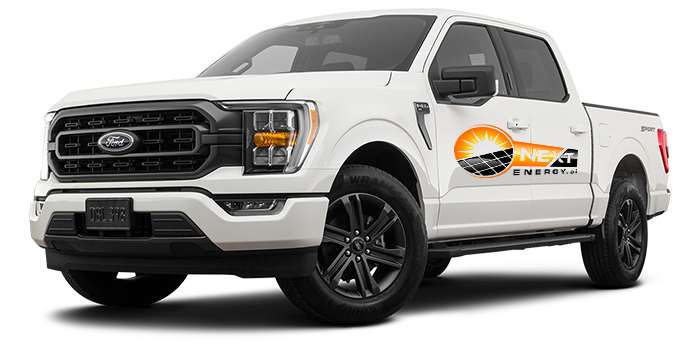
LOCATIONS
AREAS WE SERVE
Colorado
Wyoming
LET US KNOW WHAT YOU NEED
CONTACT DETAILS
Loveland Office: 970 800 6398
Cheyenne Office: 307 400 6398
Email: info@nextenergy.ai
Address 1: 6880 N. Franklin Ave. Loveland, CO 80538
LOVELAND OFFICE
CHEYENNE OFFICE
- Mon - Thu
- -
- Friday
- -
- Sat - Sun
- Closed
FOLLOW US
REQUEST A FREE QUOTE
REQUEST A FREE QUOTE
We will get back to you as soon as possible.
Please try again later.
Proudly serving Northern Colorado & Southern Wyoming, including Wellington, Fort Collins, Greeley, Cheyenne, Loveland, Livermore, Windsor, Denver, Red Feather Lakes, Lakewood, Centennial, Aurora & more.

NextEnergy.ai, proud partner of the Colorado Energy Association
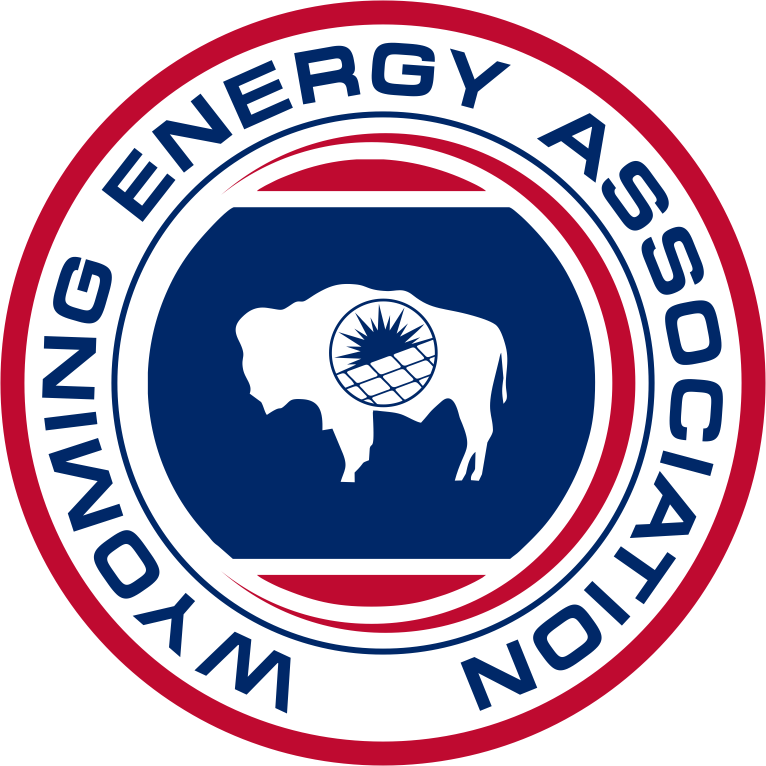
NextEnergy.ai, proud partner of the Wyoming Energy Association.
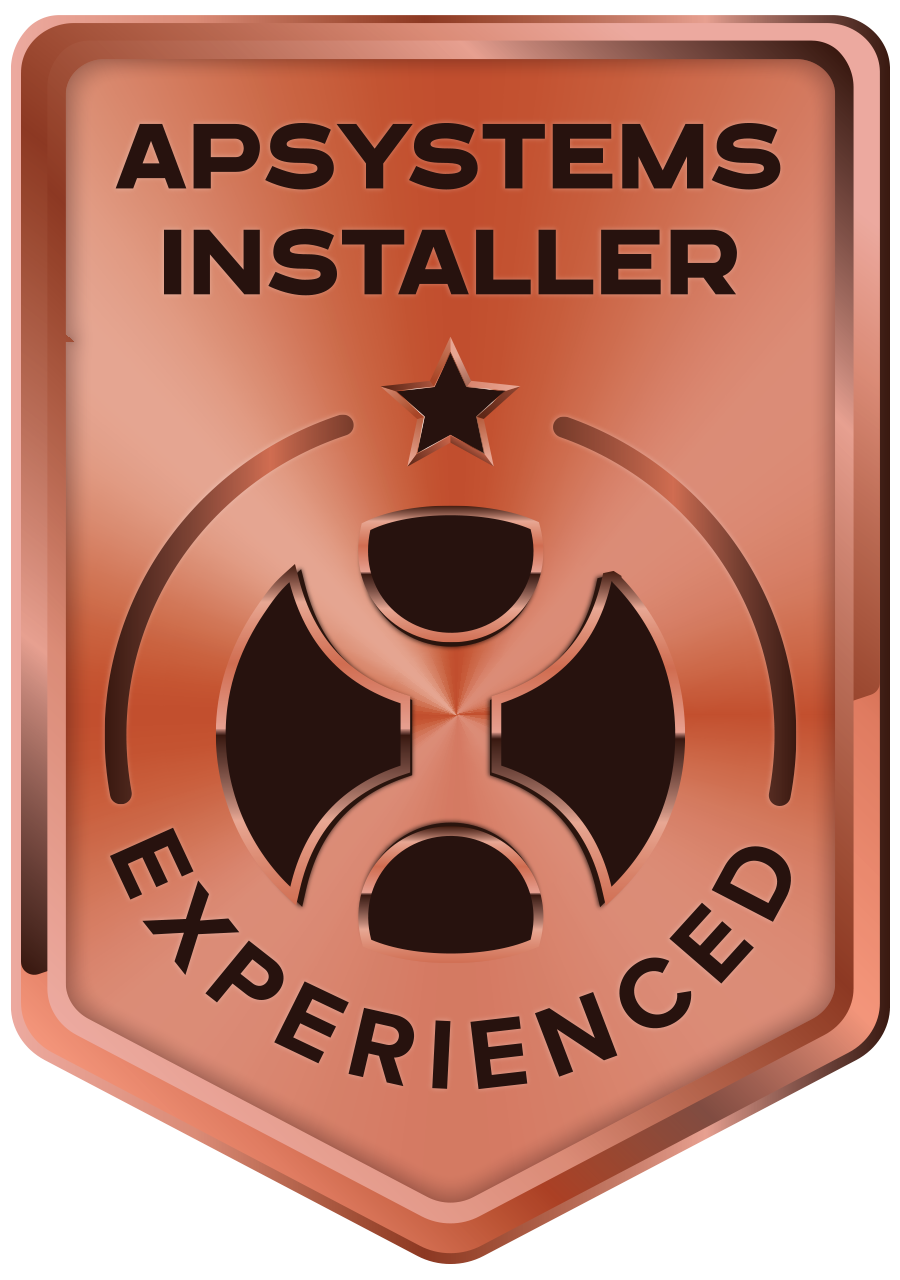
Certified APsystems Experienced Installer for Quality Micro Inverter Solutions.
All Rights Reserved | Privacy Policy | Terms and Conditions | Next Energy.Ai | Designed by Lingows
